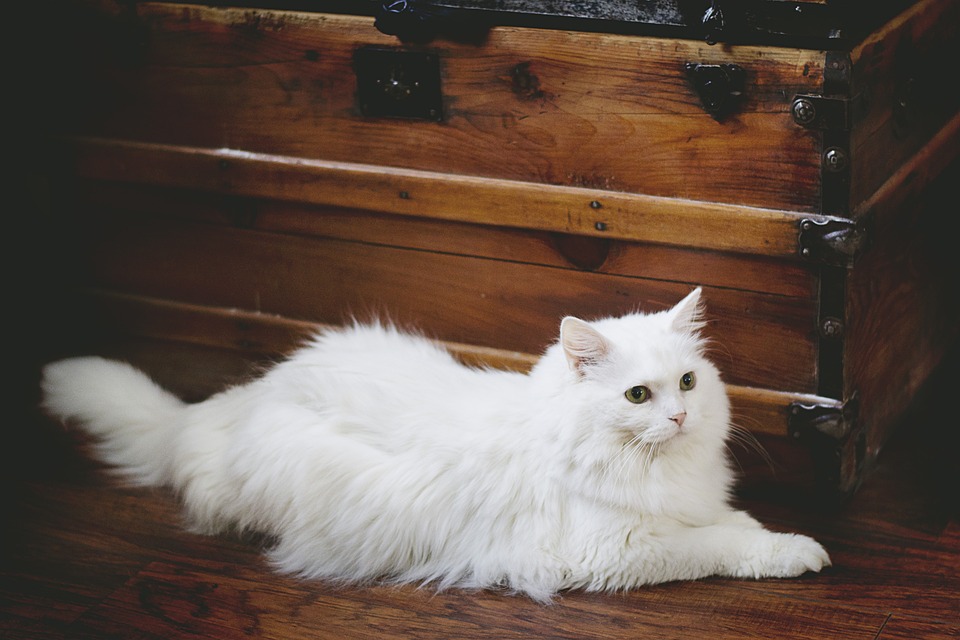Cats, just like humans, can experience respiratory issues that go beyond a simple cold. While a runny nose and sneezing may seem harmless at first, it’s important for cat owners to be aware of the potential for serious respiratory conditions. This article aims to shed light on some of these conditions, their symptoms, causes, and available treatment options. Read on to learn more.
Common Serious Respiratory Conditions in Cats
1. Feline Asthma:
– Definition and Overview:
Feline asthma is a chronic inflammatory condition that affects the airways of cats. It is similar to human asthma and can cause difficulty breathing, coughing, wheezing, and other respiratory symptoms.
– Symptoms:
Cats with asthma may exhibit coughing, wheezing, rapid breathing, and labored breathing. They may also have reduced appetite, lethargy, and weight loss.
– Causes:
The exact cause of feline asthma is unknown, but it is believed to be triggered by environmental factors such as allergens, smoke, stress, and respiratory infections.
– Diagnosis:
Veterinarians can diagnose feline asthma through a combination of physical examination, medical history, and diagnostic tests such as x-rays and bronchoscopy.
– Treatment and Management:
Treatment options for feline asthma include medications such as bronchodilators and corticosteroids to reduce inflammation and open up the airways. Environmental modifications, such as reducing exposure to triggers, can also help manage the condition.
2. Feline Upper Respiratory Infection (URI):
– Definition and Overview:
Feline upper respiratory infections are viral or bacterial infections that affect the upper respiratory tract of cats. They are highly contagious and can cause symptoms similar to a cold in humans.
– Symptoms:
Cats with a URI may have sneezing, nasal discharge, coughing, fever, loss of appetite, and lethargy. They may also develop conjunctivitis or eye discharge.
– Causes:
URIs in cats are commonly caused by viral infections, such as feline herpesvirus and feline calicivirus, or bacterial infections, such as Bordetella bronchiseptica.
– Diagnosis:
Veterinarians can diagnose a URI based on clinical signs, physical examination, and laboratory tests, such as viral or bacterial cultures.
– Treatment and Prevention:
Treatment for URIs in cats often involves supportive care, such as keeping the cat hydrated and providing a warm and comfortable environment. Antibiotics may be prescribed for bacterial infections. Vaccinations can help prevent some of the viral causes of URIs.
3. Chronic Obstructive Pulmonary Disease (COPD):
– Definition and Overview:
COPD is a progressive respiratory disease that obstructs airflow in the lungs. It is commonly seen in older cats and can cause breathing difficulties.
– Symptoms:
Cats with COPD may have coughing, wheezing, difficulty breathing, exercise intolerance, and reduced appetite. They may also have an increased respiratory rate.
– Causes:
The exact cause of COPD in cats is unknown, but it is believed to be associated with long-term exposure to irritants such as cigarette smoke, dust, and allergens.
– Diagnosis:
Veterinarians can diagnose COPD based on clinical signs, physical examination, and diagnostic tests such as x-rays and pulmonary function tests.
– Treatment and Lifestyle Modifications:
Treatment for COPD includes medications to reduce inflammation and open up the airways. Environmental modifications, such as avoiding smoking and minimizing exposure to irritants, can also help manage the condition.
4. Heartworm Disease:
– Definition and Overview:
Heartworm disease is a serious parasitic infection that affects the heart and lungs of cats. It is transmitted through mosquito bites and can be life-threatening.
– Symptoms:
Cats with heartworm disease may have coughing, difficulty breathing, weight loss, lethargy, and reduced appetite. In severe cases, it can cause heart failure.
– Causes:
Heartworm disease is caused by the parasitic worm Dirofilaria immitis, which is transmitted through mosquito bites.
– Diagnosis:
Veterinarians can diagnose heartworm disease through a combination of physical examination, medical history, and diagnostic tests such as blood tests and imaging.
– Treatment and Prevention:
Treatment for heartworm disease in cats is challenging and often focuses on managing symptoms. Prevention is key, and there are several heartworm preventatives available for cats.
Frequently Asked Questions (FAQs)
1. Q: How can I differentiate between a simple cold and a serious respiratory condition in my cat?
– A: Look for persistent symptoms such as difficulty breathing, wheezing, coughing, or excessive lethargy. If these symptoms persist for more than a few days, it’s best to consult a veterinarian.
2. Q: Can cats develop allergies that affect their respiratory system?
– A: Yes, cats can develop allergies to various substances, including pollen, dust mites, or certain foods. These allergies can lead to respiratory symptoms and require proper diagnosis and management.
3. Q: Are respiratory conditions in cats contagious to other pets or humans?
– A: Some respiratory conditions, such as feline upper respiratory infections, can be contagious to other cats. However, most respiratory conditions are not transmissible to humans or other household pets.
4. Q: How can I prevent respiratory conditions in my cat?
– A: Regular veterinary check-ups, vaccinations, and maintaining a clean and stress-free environment can help prevent respiratory conditions. Additionally, keeping your cat indoors and avoiding exposure to potential respiratory irritants can reduce the risk.
5. Q: Can smoking or secondhand smoke affect my cat’s respiratory health?
– A: Yes, smoking and secondhand smoke can be harmful to your cat’s respiratory system. Cats living in smoking households have an increased risk of developing respiratory conditions. It is strongly advised to refrain from smoking around your pets.
Conclusion:
Understanding the difference between a simple cold and a serious respiratory condition in cats is crucial for their well-being. By knowing the symptoms, causes, and available treatments for conditions like feline asthma, upper respiratory infections, COPD, and heartworm disease, cat owners can provide timely veterinary care and improve their feline companions’ quality of life. Remember, if you suspect your cat has a respiratory condition, consult a veterinarian for a proper diagnosis and treatment plan.








